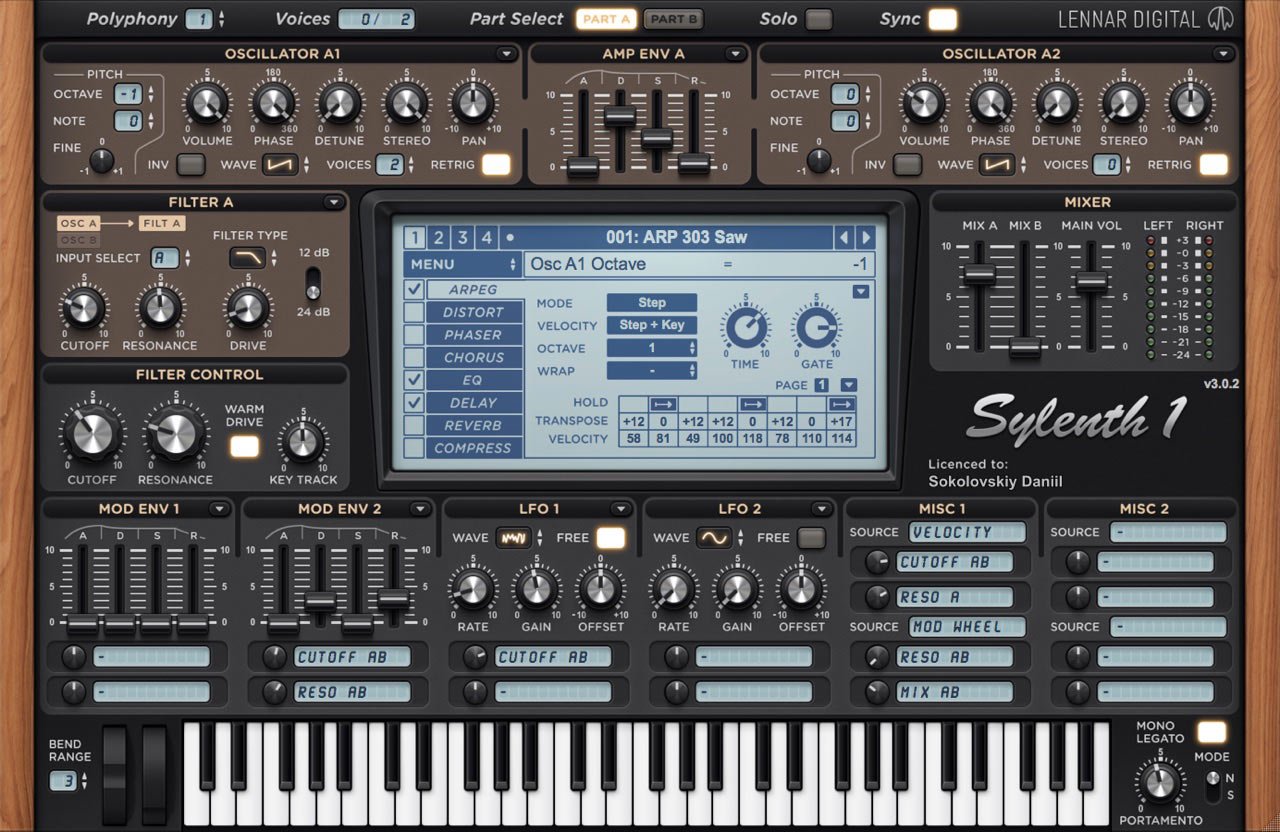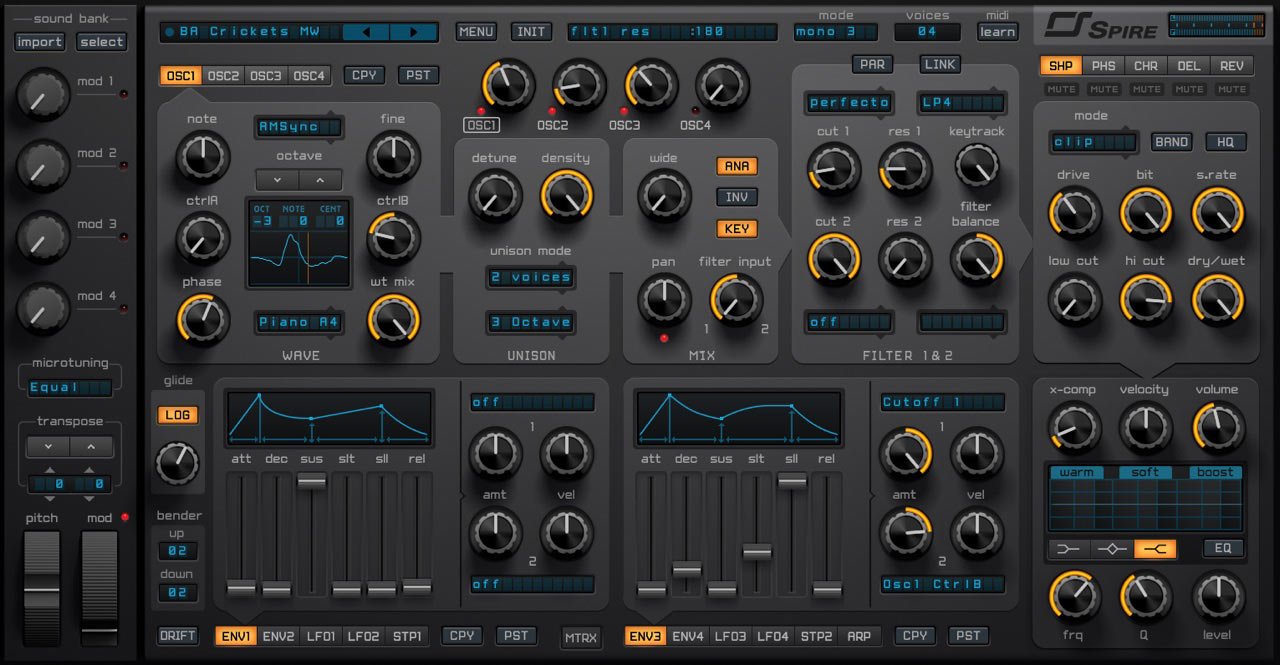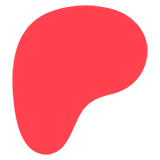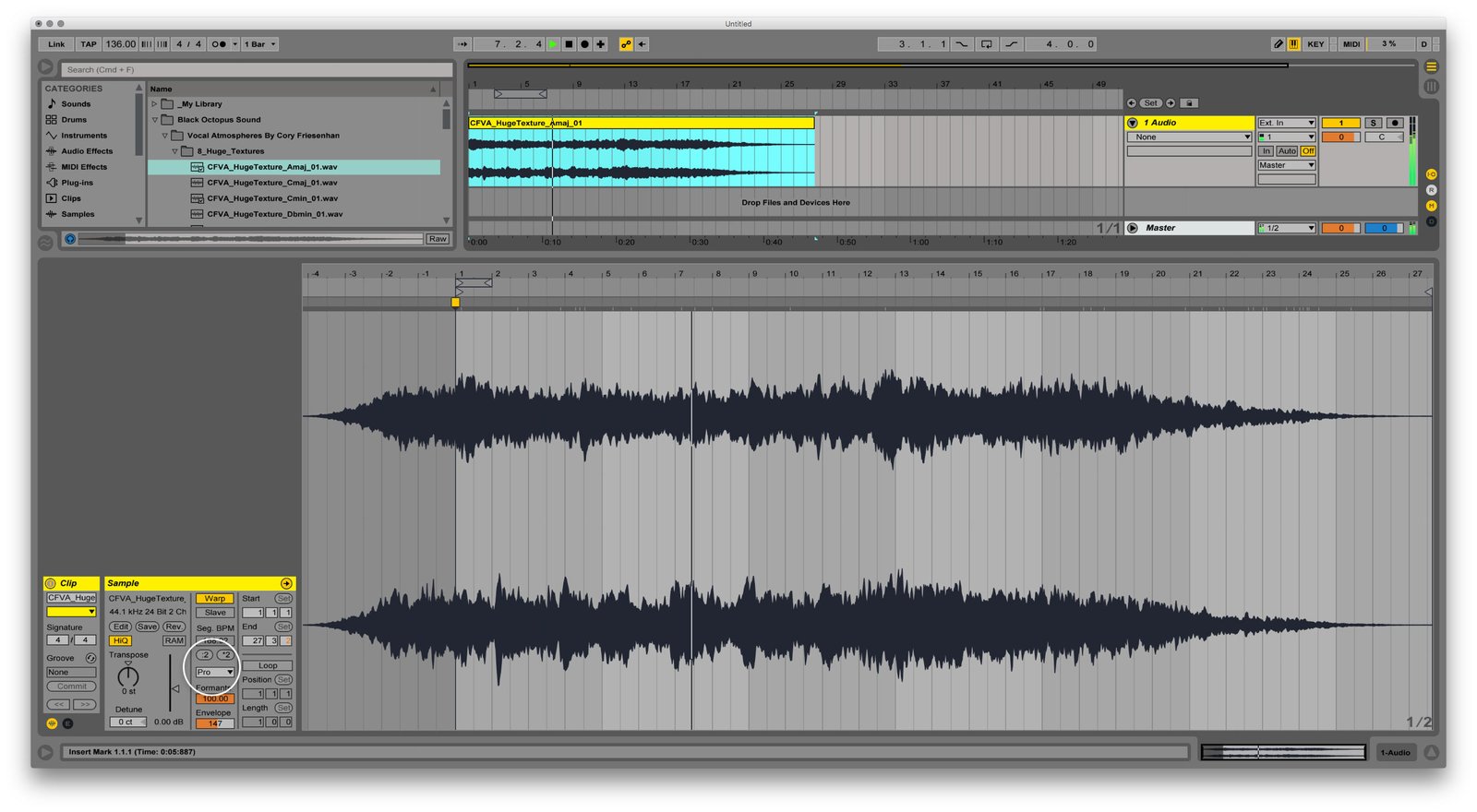Recommended synths
Please recommend good synths for a Psytrance production.
Darren
Darren, I have a few things to say before giving you a list of plugins.
Basically, I follow the principle of less is more. I believe that in-depth knowledge about a single plugin and its usage at nearly 100% of its potential is much better than having 10 synths and using them only at 10%. With fewer plugins, you save CPU loading and have an easier mixdown. And it saves your money, too.
There is no such thing as a “synth for PsyTrance”. Or for a Techno, or for a House. Plugins do not depend on a music genre. Instead of genres, think about what kind of sound you want to achieve. Let’s say, is it a bass, lead or pad? Then, if you are familiar with synthesis, think of what components you may need to create this sound: how many oscillators, what waveform, LFOs, what type of filters and so on. Only then start looking for a solution that fits your needs.
Another thing: you can recreate a certain sound in many different synthesizers, which means the plugins choice is often made based on personal preferences in overall impression, usability, and user interface. Like in any other subject, the word “good” is fully subjective and varies from person to person.
If you are not familiar with plugins yet and would like to have some names to keep in mind, the few manufacturers to keep an eye on are U-He, Reveal Sound, FabFilter, Xfer, iZotope, Spectrasonics, Rob Papen, Cableguys, Native Instruments. The list of good ones is much longer, but I recommend only those I tried myself.
Hint: subscribe to each company’s mailing list to get plugins at a discount. Usually, manufacturers offer special prices and sales a few times a year: on Christmas, Black Friday, Thanksgiving and other holidays or events. You can easily get most plugins for 30% less or even half fewer prices.
And here comes the list. Again, it’s important: it doesn’t mean you have to get all of them, and they are not “PsyTrance synths”. It’s just some synths I’ve enjoyed using.
Sylenth

Massive

Serum

Spire

The list of good plugins has not ended here, so I call other producers to share their favourite ones in the comments below.
Read also:
Recommended processing plugins
3 ways to make a kick drum





One common misconception is that only payable synths sounds “pro”. You dont have to spend a fortune on plugins to make amazing sounds. There are tons of freeware synths that sounds great. Some examples:
Crystal
http://www.greenoak.com/crystal/about.html
A really fun and goodsounding synth which have great subtractive and fm synthesis
Valsier
http://audio.betterthanclay.co.uk/
A synth dedicated for bass-sounds. Very easy to use and you can get really cool sounds from it
B-Line 303
http://www.vstplugin-sonicxtc.com/freebies
A cool plugin made for doing acid. Who doesnt like that?
Thanks for your input! In additional to freeware plugins, some DAWs have decent built-in plugins as well, for instance ‘Operator’ in Ableton Live.
Although, I realized that sometime that took you efforts to get (i.e. spend money) eventually gets more attention :-)
First time I have been trying to create own tracks using a lot of popular synths (unfortunately, pirated synths and effects, except my licenced Ableton :<). After some number of attempts, I disappointed in my music, deleted all VST and VSTi – I decided to make music for myself using only instruments and effects of Ableton, so I was surprised, how much nice sounds (synths, pads, percs, kicks, etc.) I can get, just using Operator with (and without) chain of effects.
Now I love my sound, and that simple way of production lets me to find “new and interesting” sounds, not only “right and quality” – I don’t need to spent time for searching a nice preset, I can create what I want at the moment and I can add new colors for my sound any time. It makes me believe, I will growth and release my works :>
Daniel, thanks so much for creating this site. I think there are not many other places on the web/on earth where one can find such detailed information about PsyTrance. Especially the technical stuff you provide (e. g. about subgenres or “making-ofs”) is, especially for me as fan of this genre, more than interesting.
But there is one particular topic that I’m interested in and I can’t find a real answer for this; even on YouTube are only hints or “half answers”. I’m talking about the truth about the rhythmic pattern – in particular the different types of basslines – of PsyTrance... Are there some “unspoken rules” for composers or for example preferred types of bassline patterns for particular genres?
(e. g. I assume you know the YouTube Video where one guy mock about the typical triplet pattern by showing three monkeys [for unknown reasons, this video gets thousand of clicks] – I don’t want to post the link since this desperated guy is not worth getting attention).
I mean, I watched so many videos and listen to so many songs that I’m sure that there is not only this single type of BL arrangement. Besides triplets, there are at least – AFAIH (as far as I hear;) – four more possible arrangements for typical PsyTrance (neglecting futuristic kind-of Psytrance genres like those with more than 200 BPM etc):
The good old offbeat BL,
the offbeat BL in variation (playing two notes, on, for example 1.1.3 and 1.1.4 w/o the initial short note after the beat),
3+4. At least two variations of a swing BL, one with two BL notes and one with three (whereby the intervals between the notes can be defined free – so in theory there is an endless number of variations), and I assume there are probably many many more.
So it would be really cool to get some feedback from you – in case you have a free minute (or hour^^) and would be so kind and give just a brief overview who you handle your BL arrangement and whether, for example, you prefer a pattern, or always use the same, or even do variations within the same song.
Thanks in advance! And keep on making the great music :0)